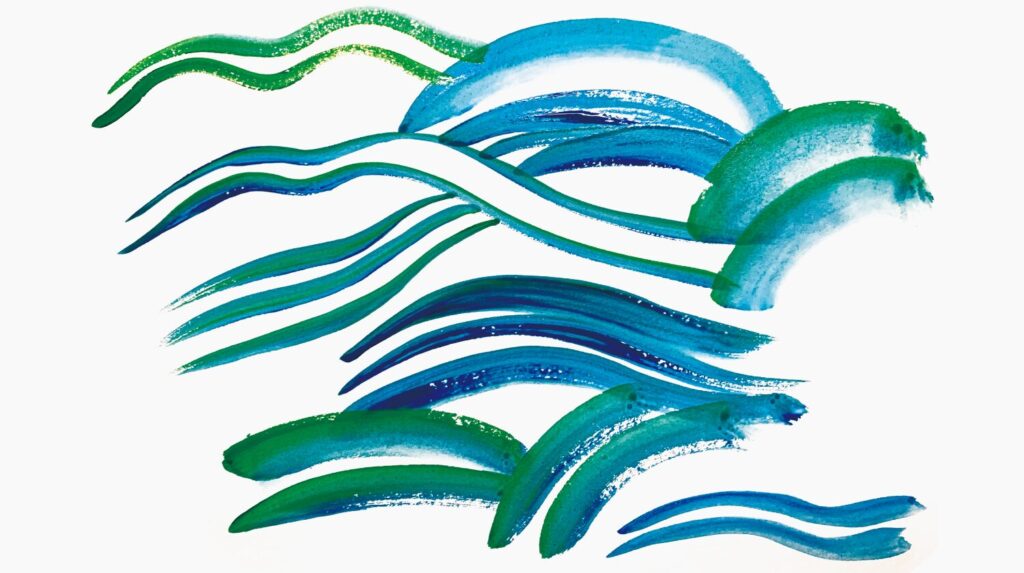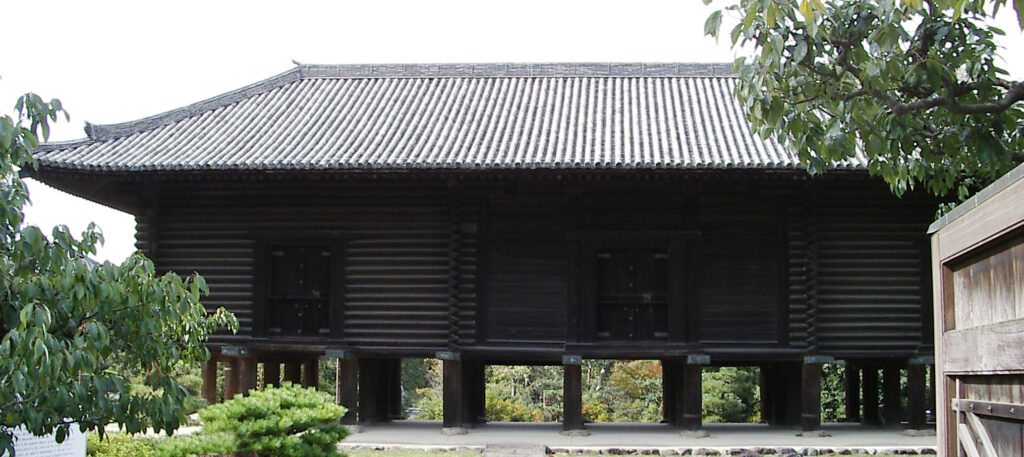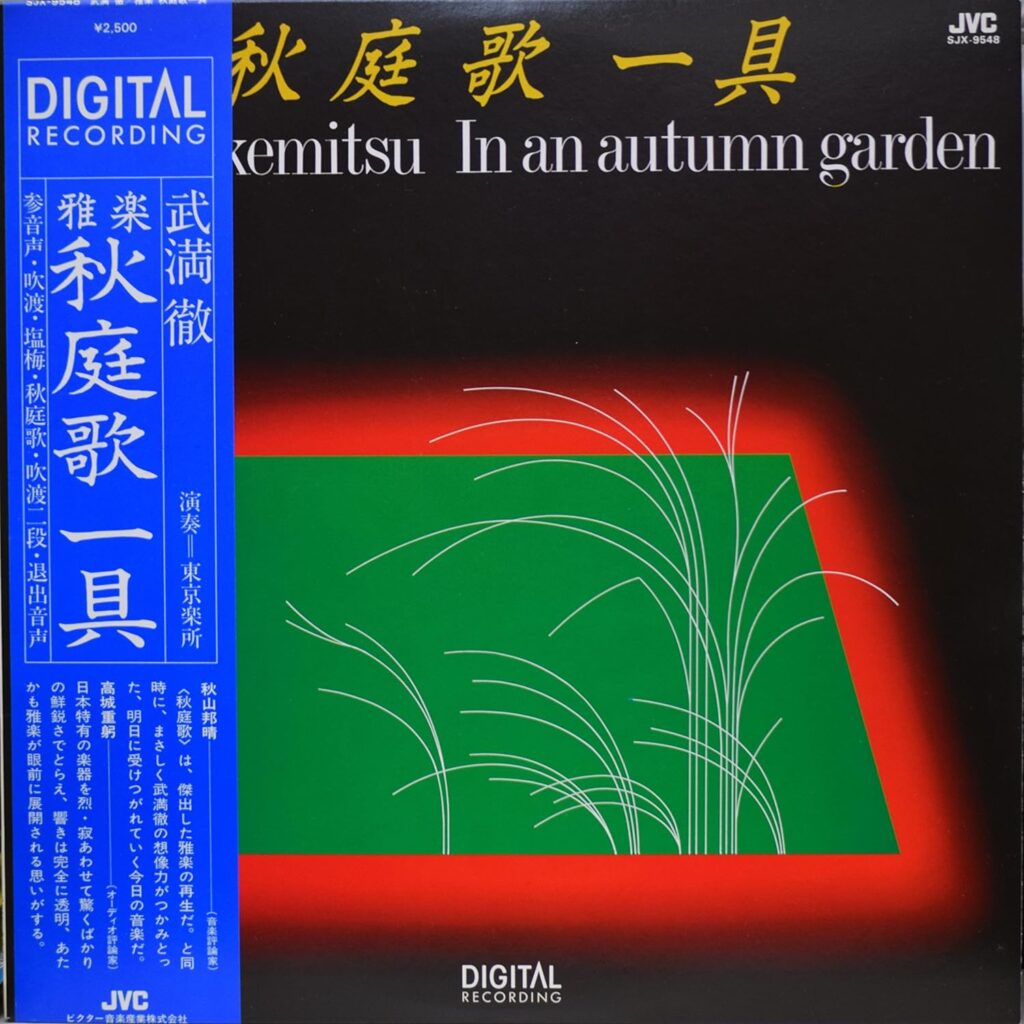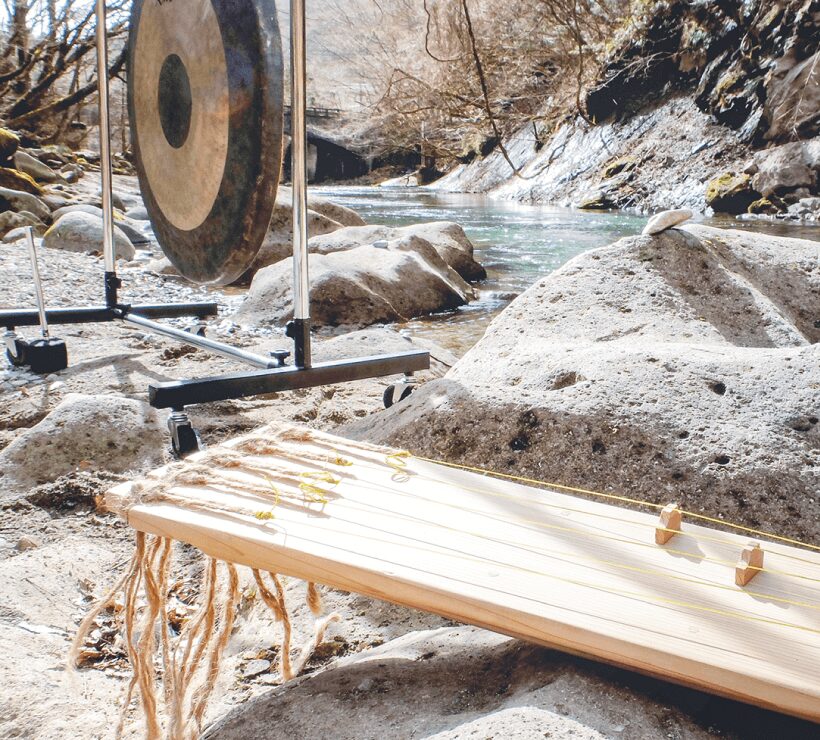
When one hears "Gagaku," does it bring to mind shrines or temples?
Originally, Japan did not distinctly separate Shinto and Buddhism, practicing a syncretism of the two. It was not until after the Meiji period, with the separation of Shinto and Buddhism, that a clear distinction was made.
Thus, even places that became shrines contain Buddhist statues in their treasure halls, and their architecture is clearly influenced by Buddhist styles.
Likewise, it is common to find torii gates within the precincts of large temples, indicating that deities were also venerated there.
Gagaku, having been introduced to Japan nearly 1300 years ago, is performed at both shrines and temples during festivals and Buddhist ceremonies.

The eye-opening ceremony of the Great Buddha at Todaiji in 732 (the fourth year of the Tempyo-shoho era) included Buddhist vocal music called Shomyo, performed by monks, followed by music and dances from Japan, China, and Korea.
Shomyo is usually chanted without instruments, but during Buddhist ceremonies where Gagaku is played, it accompanies the entrance and exit of monks and various actions, enriching the musicality of the ceremony.
Shomyo and Bugaku (a type of Gagaku dance) ceremonies still exist in various places, including the Shoryoe at Shitennoji Temple and the Osenbokou at Sanzen-in Temple.
The eye-opening ceremony for the Great Buddha Hall's Showa-era renovation at Todaiji in October 1980 was a grand event that included a recreation of the original ceremony.
Photos from this 1980 ceremony show a large number of monks lined up behind the Gagaku musicians, highlighting the event's grandeur and the project's ambitious scope, including the restoration of "Gigaku" masks.

Gigaku, used during these ceremonies, had disappeared by the Kamakura period but its masks remain in the Shosoin.
The restoration of Gigaku involved experts from various fields, including the Imperial Household Agency Music Department and academia, with performances by the Tenri University Gagaku Music Department.
By 1990, all documented Gigaku pieces had been restored, allowing the Tenri University Gagaku Music Department to perform them.
Todaiji Temple hosted a five-day event in 2002 to celebrate 1250 years since the Great Buddha's eye-opening ceremony, featuring Bugaku and Gigaku performances.

Folk performances based on Gagaku and Bugaku are found throughout Japan, from Yamagata in the north to Kyushu in the south, influenced by historical figures and locations.
Restoration efforts are not limited to Gigaku but extend to Gagaku as well, with instruments preserved in the Shosoin and depicted in art from the Tempyo era.
The National Theatre's Gagaku performances offer an opportunity to experience these restored pieces.

The National Theatre commissions contemporary composers to create new works for Gagaku instruments, with Toru Takemitsu's "November Steps" being a notable example, blending traditional techniques with modern arrangements.
Recently, there has been a movement to appreciate Gagaku as music for enjoyment, beyond ceremonial purposes, with artists composing and arranging pieces for Gagaku instruments.
Toshiro Mayuzumi's "Mandala Symphony" and Hideki Togi's debut with the hichiriki are examples of modern interpretations of Gagaku.
*The National Theatre closed for reconstruction in October 2023, with no clear reopening date due to various circumstances.
Please also see the following articles:
Please also see the following articles:
The history of Gagaku in Japan, China, and Korea.
What is Gagaku | Introduction to Gagaku
Recommended Gagaku, from classical Gagaku to new Gagaku [3 pieces]
